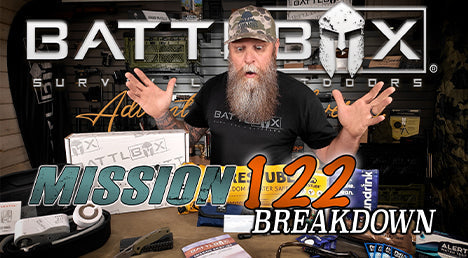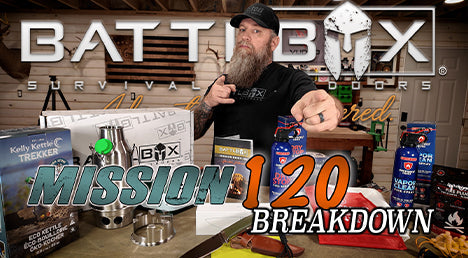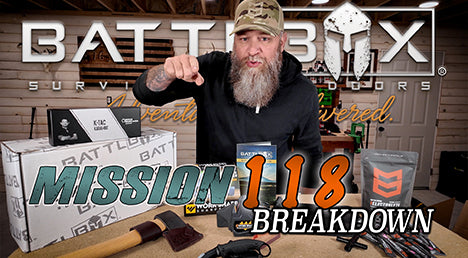Battlbox
How Many FPS for Bow Hunting: Understanding Arrow Speed and Performance
Table of Contents
- Introduction
- Understanding Arrow Speed
- The Importance of Arrow Weight
- Optimizing Your Bow Setup
- The Trade-Offs of Arrow Speed
- Conclusion
- FAQ
Introduction
Imagine standing in the crisp morning air, the anticipation of the hunt coursing through your veins. You’ve practiced your shots, fine-tuned your gear, and now it’s time to unleash your arrow. But as you prepare, a question lingers in the back of your mind: How fast does my arrow need to travel for a successful hunt? The answer is crucial, especially for bow hunters who seek both precision and power.
Arrow speed, measured in feet per second (FPS), is often a hot topic among archers. Some claim that a faster arrow guarantees better performance, while others argue that speed is not the only factor that matters. So, how many FPS do you really need for bow hunting? In this comprehensive guide, we will explore the relationship between arrow speed, shot placement, and overall effectiveness in the field, helping you to make informed decisions about your gear.
By the end of this post, you will understand the ideal FPS for various hunting scenarios, the importance of arrow weight, and how to optimize your bow setup for maximum impact. Whether you’re a seasoned hunter or new to the sport, this information will empower you to enhance your skills and increase your success in the field.
Understanding Arrow Speed
The Basics of Arrow Speed
Arrow speed is the velocity at which an arrow travels after being released from a bow. This speed is influenced by several factors, including the type of bow, draw weight, arrow weight, and the bow's design. Bow manufacturers often advertise their products with impressive FPS ratings, but what does this mean in practical terms for hunters?
-
Types of Bows: Compound bows, recurve bows, and crossbows all have different mechanisms that affect arrow speed. Compound bows are typically the fastest due to their pulley systems that store energy more efficiently.
-
Draw Weight: The amount of weight an archer must pull to draw the bowstring directly impacts arrow speed. Higher draw weights generally result in faster arrow speeds, but comfort and control should always be prioritized.
-
Arrow Weight: Heavier arrows typically travel slower but can provide better penetration and energy transfer upon impact. Finding the right balance between arrow weight and speed is essential for effective hunting.
The Relationship Between Speed and Accuracy
While higher FPS can lead to flatter trajectories and improved accuracy at longer distances, it’s not the only aspect that determines a successful shot. The key lies in understanding how arrow speed affects shot placement and overall performance.
-
Shot Placement: The old adage “shot placement is everything” holds true in archery. An arrow traveling at 300 FPS may not be as effective if it misses the vital organs of the game animal. Conversely, a well-placed shot from a slower arrow can yield the same results.
-
Effective Range: Faster arrows can extend your effective range, allowing for more accurate shots at greater distances. For instance, if you can shoot an arrow at 320 FPS, you may have a wider margin for error compared to shooting at 260 FPS.
Ideal FPS for Different Game
The type of game you’re hunting can significantly influence the desired arrow speed. Here’s a breakdown of recommended FPS for various species:
-
Whitetail Deer: For whitetail deer, a speed of around 250-300 FPS is generally sufficient. This speed allows for effective shot placement while ensuring adequate penetration.
-
Elk and Larger Game: When hunting larger animals like elk or moose, you may want to aim for a speed of 300-350 FPS, especially if you’re using heavier arrows for better penetration.
-
Smaller Game: For smaller game like rabbits or birds, a speed of 240-280 FPS may be adequate. Here, accuracy and shot placement are crucial.
The Importance of Arrow Weight
Balancing Speed and Weight
One of the most critical factors that influence arrow performance is weight. While speed is essential, the weight of the arrow can have a more significant impact on penetration and energy transfer.
-
Momentum and Kinetic Energy: Heavy arrows provide better momentum and kinetic energy upon impact, which can lead to more effective kills. A heavier arrow will retain energy better over distance and can penetrate deeper into the target.
-
Arrow Weight Recommendations: A common rule of thumb is to have your arrow weight at least 5 grains per pound of draw weight. For example, if you have a 70-pound draw weight, your arrow should weigh at least 350 grains.
Choosing the Right Arrow
When selecting arrows, consider the following factors to optimize your hunting setup:
-
Material: Carbon arrows are popular for their lightweight properties and durability. Aluminum arrows can be heavier and more robust but may not offer the same speed.
-
Length: Ensure your arrows are the correct length for your bow setup. Arrows that are too short can be dangerous, while those that are too long can negatively impact accuracy.
-
Broadheads: The type of broadhead you choose can also impact arrow performance. Fixed-blade broadheads may require a different setup compared to mechanical heads, especially regarding arrow speed and flight stability.
Optimizing Your Bow Setup
Tuning Your Bow
To achieve the desired FPS and accuracy, tuning your bow is essential. Proper tuning ensures that your bow is set up to deliver arrows efficiently and accurately.
-
Cam Timing: Ensure that your bow’s cams are timed correctly. This means that both cams reach their full draw at the same time, which is crucial for arrow speed and consistency.
-
String and Cable Maintenance: Regularly check and replace worn strings and cables. A frayed string can affect arrow speed and accuracy.
-
Sight Adjustment: Properly adjust your sights to match your shooting distance. Many hunters prefer to have their sights calibrated for different distances, allowing for quick adjustments in the field.
Accessories that Enhance Performance
In addition to bow tuning, the right accessories can significantly impact your hunting success:
-
Stabilizers: A stabilizer helps balance your bow, reducing torque and improving accuracy during the shot. This can be especially helpful for hunters shooting at longer distances.
-
Peep Sights: Installing a peep sight can enhance your aiming precision. It provides a consistent anchor point for your eye, improving shot accuracy.
-
Release Aids: A quality release aid can help improve your shot consistency. It allows for a smoother release, reducing the chances of torque and misalignment.
The Trade-Offs of Arrow Speed
Advantages of Faster Arrows
-
Flatter Trajectory: Faster arrows travel in a straighter line, making it easier to hit targets at varying distances without excessive adjustments.
-
Wider Margin for Error: With increased speed, you gain a larger window of effectiveness when estimating distances, allowing for greater flexibility during the hunt.
-
Reduced Wind Drift: Faster arrows are less affected by wind, providing a more stable flight path and improving accuracy in windy conditions.
Disadvantages of Excessive Speed
-
Increased Vibration: High-speed setups can cause more vibration upon release, which may impact accuracy and wear down bow accessories over time.
-
Broadhead Planing: If you shoot overly light arrows at high speeds, broadheads can plane off target, especially with fixed-blade designs.
-
Less Forgiving: Low brace height bows designed for speed may be less forgiving of poor shooting form, making it more challenging for less experienced hunters.
Conclusion
In the world of bow hunting, understanding how many FPS you need is more than just a number; it's about balancing speed, accuracy, and penetration. While a higher FPS can enhance your hunting capabilities, it’s essential to consider arrow weight, shot placement, and your personal shooting skills.
Ultimately, the best setup is one that fits your hunting style and the game you're pursuing. Whether you prefer a lightweight, high-speed arrow for flat trajectories or a heavier arrow for deeper penetration, the key is finding what works best for you.
Remember, the right gear can make all the difference. Consider exploring Battlbox's Hunting Collection for quality gear tailored to your outdoor adventures. Additionally, Battlbox offers subscription services to ensure you receive hand-picked gear every month to keep your skills sharp and prepared for your next hunt. Check out the Basic Subscription or take your hunting experience to the next level with the Pro Plus Subscription.
FAQ
What is the ideal FPS for bow hunting?
The ideal FPS for bow hunting generally ranges from 250 to 350 FPS, depending on the type of game and your personal shooting style.
Does a faster arrow guarantee better results?
Not necessarily. While a faster arrow can provide advantages like a flatter trajectory and a wider margin for error, shot placement and arrow weight are equally, if not more, important.
How do I determine the right arrow weight for my bow?
A common guideline is to use arrows that weigh at least 5 grains per pound of draw weight. For a 70-pound draw weight, your arrow should weigh at least 350 grains.
What accessories can improve my bow's performance?
Consider investing in stabilizers, peep sights, and quality release aids. These accessories can enhance your accuracy and overall shooting experience.
Can I use any broadhead with a high-speed arrow?
While mechanical broadheads typically handle higher speeds better, fixed-blade broadheads can experience planing issues at excessive speeds. Choose broadheads that match your arrow speed for optimal performance.
Share on:

















